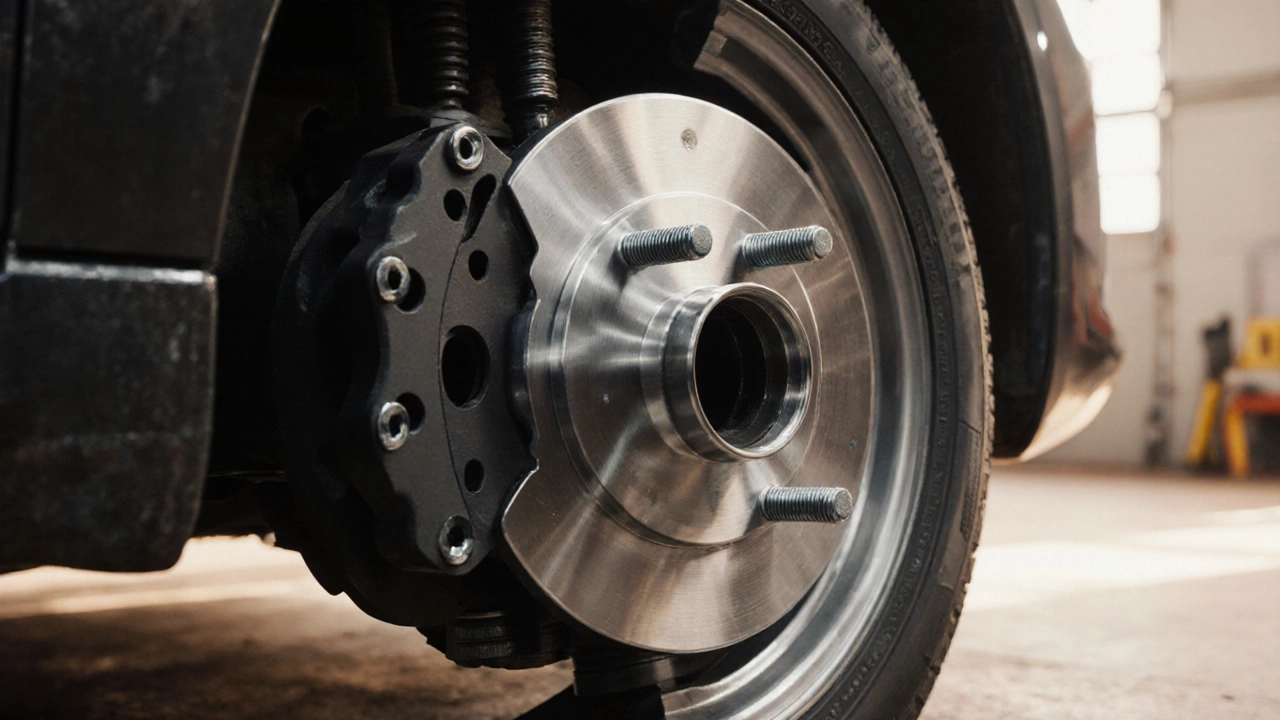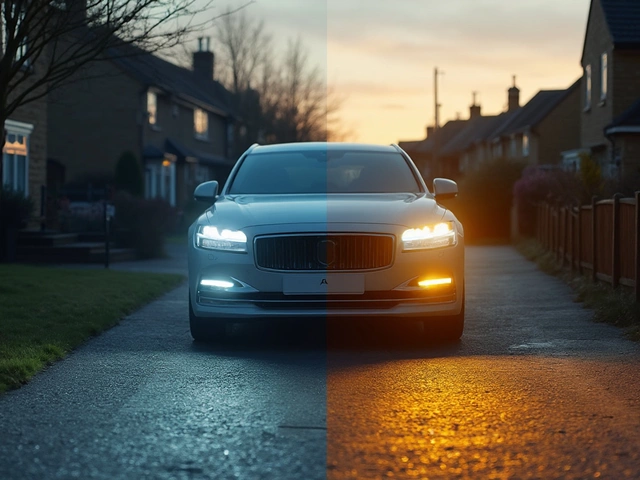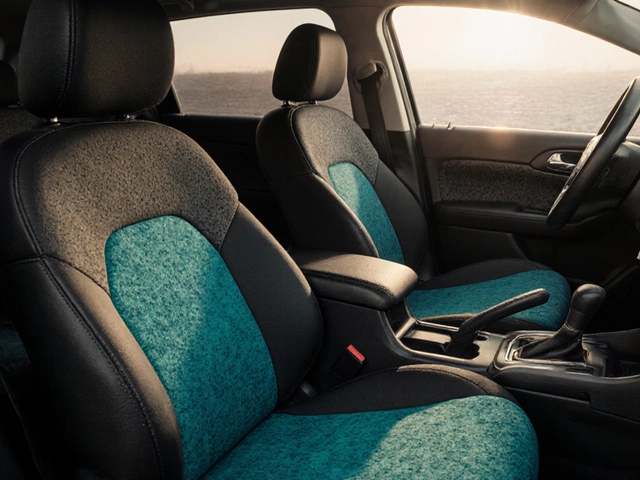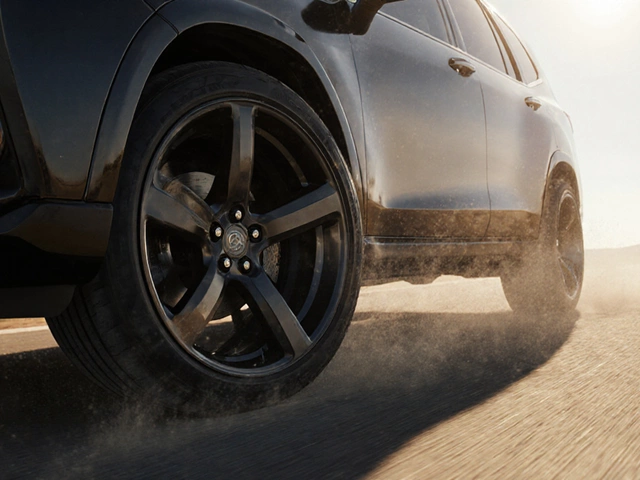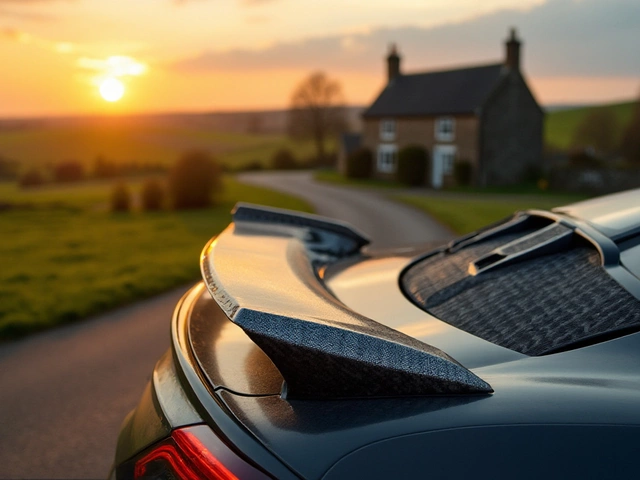Wheel Spacer Tire Wear Calculator
Tire Wear Impact Assessment
Comparison Table: Hub-Centric vs Lug-Centric Spacers
| Feature | Hub-Centric | Lug-Centric |
|---|---|---|
| Fitment Tolerance | Exact bore match, minimal run-out | Relies on bolt pattern, slight run-out possible |
| Cost | Usually higher | Typically lower |
| Impact on Tire Wear | Low – maintains wheel centerline | Higher – can cause mis-alignment |
| Recommended for Performance Builds | Yes | Only if budget constrained |
Quick Takeaways
- Wheel spacers change wheel offset and can affect tire wear if not installed correctly.
- Proper torque, alignment, and suspension settings keep wear patterns normal.
- Hub‑centric spacers generally cause less uneven wear than lug‑centric ones.
- Monitor tire pressure and wear regularly after adding spacers.
- Following installation best practices minimizes extra wear.
What a Wheel Spacer Actually Is
When you see a wheel spacer a thin metal disc that sits between the hub and the wheel to push the wheel outward, its job is simple: change the distance between the hub mounting surface and the wheel’s mounting surface. This changes the wheel’s offset and can give a wider track, a different aesthetic, or accommodate larger brake components.
Spacers come in two main designs. Hub‑centric spacers that have a central bore matching the hub’s diameter line up the wheel’s centerline with the hub’s center. Lug‑centric spacers that rely on the bolt holes to center the wheel are cheaper but can introduce slight mis‑alignment.
The wheel hub the central part of the axle where the wheel mounts must be clean and free of rust for a solid connection.
How Tire Wear Happens
Tire wear is a result of the tread contacting the road unevenly over time. The main culprits are:
- Wheel alignment the angles of camber, caster and toe.
- Improper torque the clamping force on wheel bolts causing the wheel to shift under load.
- Inconsistent suspension dynamics how the suspension moves and keeps the tire flat on the road.
- Wrong tire pressure over‑ or under‑inflated tires.
When any of these elements are off, the tread wears faster on one side, creates cupping, or develops feather‑edge patterns.
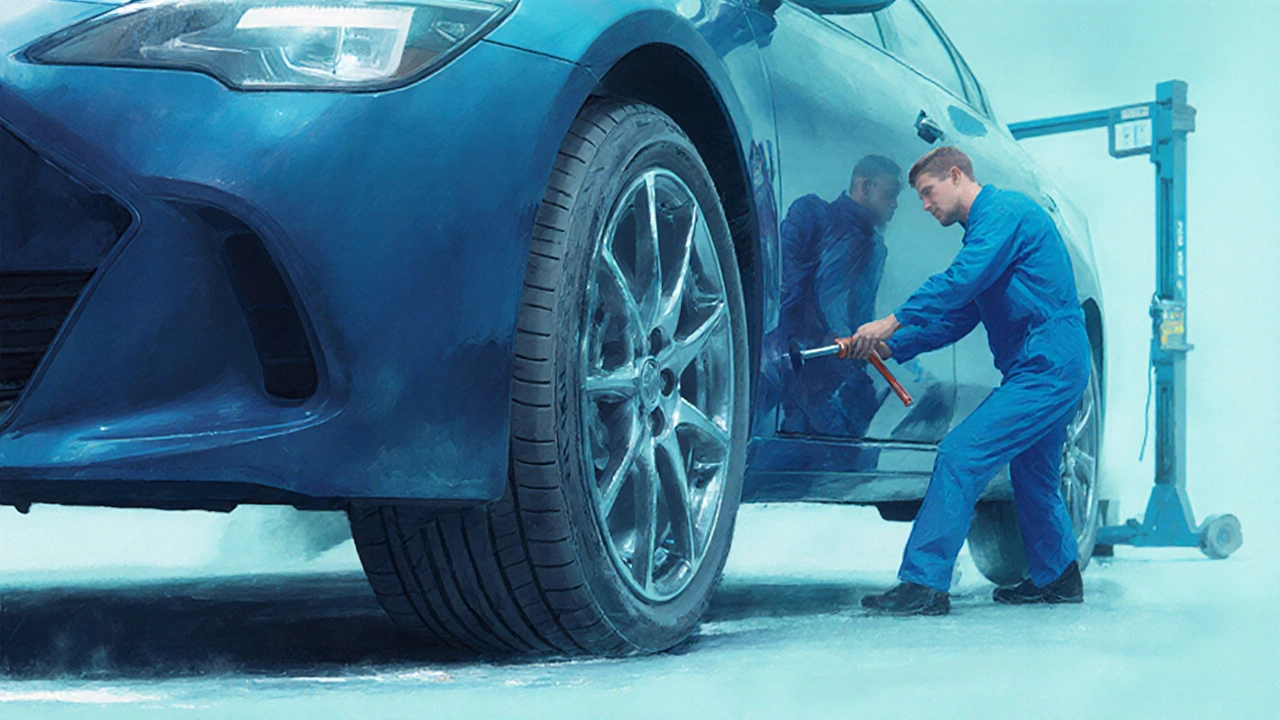
Do Wheel Spacers Increase Tire Wear?
The short answer: they can, but only if the installation or the surrounding setup is sloppy. A correctly fitted, properly torqued spacer does not inherently damage the tire.
Here’s why:
- Offset shift. Adding a spacer pushes the wheel outward, changing the scrub radius. If the new offset moves the tire’s contact patch too far toward the outside or inside of the wheel well, the tire may experience additional side‑load during cornering, which can accelerate edge wear.
- Centerline alignment. Hub‑centric spacers keep the wheel’s center aligned with the hub, preserving the original camber and toe angles. Lug‑centric spacers can cause a tiny wobble, enough to create uneven wear over thousands of kilometres.
- Bolt‑hole stress. Incorrect torque (too loose or too tight) can let the spacer shift under load, causing the wheel to move slightly each time you brake or hit a bump. That micro‑movement translates to a “scuff” pattern on the tread.
- Suspension geometry. A wider track alters the lever arms the suspension works with. If the suspension is not retuned (e.g., spring rates or anti‑roll bar stiffness), the wheels may tilt more in cornering, again influencing wear.
In practice, most drivers who follow the manufacturer’s torque specs, choose hub‑centric units, and re‑check alignment after installation see no noticeable increase in wear.
Key Factors That Influence Wear After Adding Spacers
To keep tire wear normal, pay attention to these variables.
- Spacer material and thickness. Steel or aluminum spacers of 5‑15mm thickness are common. Thicker spacers create a larger offset change, which has a bigger impact on the contact patch.
- Correct torque. Use a calibrated torque wrench and tighten to the vehicle‑maker’s specification (usually between 80-120Nm for passenger cars). Over‑torquing can strip threads; under‑torquing allows movement.
- Professional alignment. After any offset change, get a four‑wheel alignment. This ensures camber, caster and toe are within spec, eliminating uneven wear.
- Wheel balancing. Spacers add a small amount of weight. Re‑balance the wheel‑spacer assembly to avoid vibration, which can cause premature wear on the inner or outer edges.
- Suspension condition. Worn bushings or worn control arms can amplify the effects of a new track width. Replace or refurbish these components if they’re near the end of life.
- Tire pressure monitoring. A wider track can slightly change the load on each tire. Check pressure weekly and adjust to the vehicle’s recommended levels.
Best‑Practice Checklist for Installing Wheel Spacers
- Choose hub‑centric spacers that match your hub bore exactly.
- Verify the spacer’s bolt‑hole pattern matches your wheel and hub.
- Clean the hub surface and spacer mating faces to remove rust or debris.
- Apply a thin layer of anti‑seize on the bolt threads only (not on the mating surfaces).
- Tighten wheel bolts in a star pattern to the specified torque.
- Re‑mount the wheel, then re‑balance the whole assembly.
- Schedule a full alignment within 50km of installation.
- Inspect tire wear after the first 1,000km and every 2,000km thereafter.
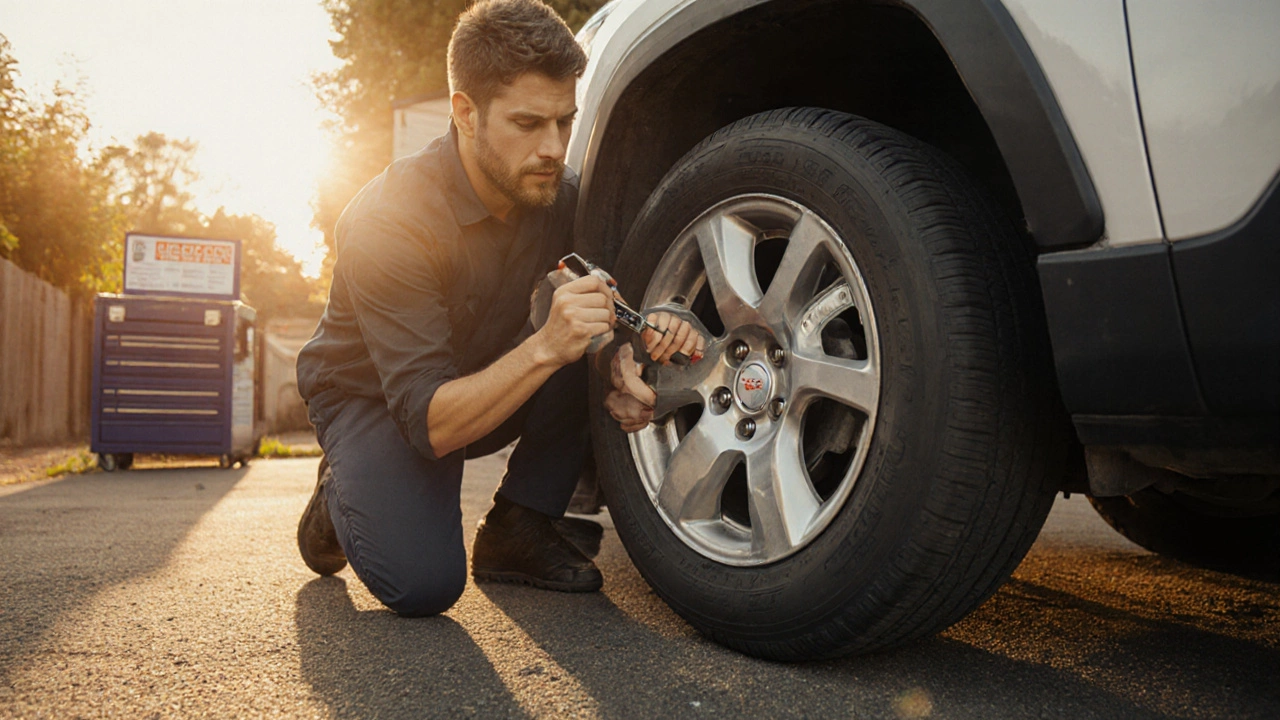
Comparison of Hub‑Centric vs Lug‑Centric Wheel Spacers
| Feature | Hub‑Centric | Lug‑Centric |
|---|---|---|
| Fitment tolerance | Exact bore match, minimal run‑out | Relies on bolt pattern, slight run‑out possible |
| Cost | Usually higher | Typically lower |
| Impact on tire wear | Low - maintains wheel centerline | Higher - can cause mis‑alignment |
| Installation difficulty | Same bolt pattern, easy | Same bolt pattern, easy |
| Recommended for performance builds | Yes | Only if budget constrained |
Real‑World Example
Mark, a 2018 Subaru WRX owner from Brisbane, added 10mm hub‑centric aluminum spacers to fit a set of 19‑inch wheels. He followed the checklist, had an alignment done, and kept his tire pressure at 32psi. After 15,000km he logged only a 1mm difference between inner and outer tread depth - well within normal wear range.
Contrast that with Jenna, who installed cheap 5mm lug‑centric spacers on a 2020 Mazda CX‑5 without re‑aligning. Six months later she noticed cupping on the outer edges of both front tires. A quick shop visit revealed her wheels were out of toe by 0.4°, a direct result of the spacer wobble.
When to Re‑Evaluate Your Spacer Setup
If you notice any of the following, it’s time to check the spacer installation:
- Vibration at 80km/h or higher.
- Uneven tread depth greater than 2mm.
- Pulling to one side when cruising.
- Scraping noises from the inner wheel arch.
Addressing the issue early prevents costly tire replacements and maintains safe handling.
Frequently Asked Questions
Will wheel spacers affect fuel economy?
A slight increase in drag can occur because the wheels sit farther out, but the effect is usually under 1% for typical spacer thicknesses. The larger impact comes from any changes in tire pressure or alignment, so keep those correct.
Can I use spacers on all tire sizes?
Spacers work with any tire size as long as the wheel’s bolt pattern and diameter match the vehicle. However, very wide tires may need additional clearance checks for the fender and suspension components.
Do I need new lug nuts when I add spacers?
If the original lug nuts are the correct length and grade for the new wheel‑spacer‑wheel stack, you can reuse them. Shorter nuts can pull through the spacer, and lower‑grade nuts may stretch under the added load.
How often should I re‑check alignment after installing spacers?
Do an alignment check within the first 50km, then again after 1,500km or any time you notice handling changes. Regular checks every 5,000km are a good habit for any vehicle with modified track width.
Are there legal restrictions on wheel spacers in Australia?
Australian Design Rules require that any modification does not alter the vehicle’s load‑carrying capacity or compromise safety. Using approved, properly sized spacers and maintaining correct alignment keeps you within the law.

